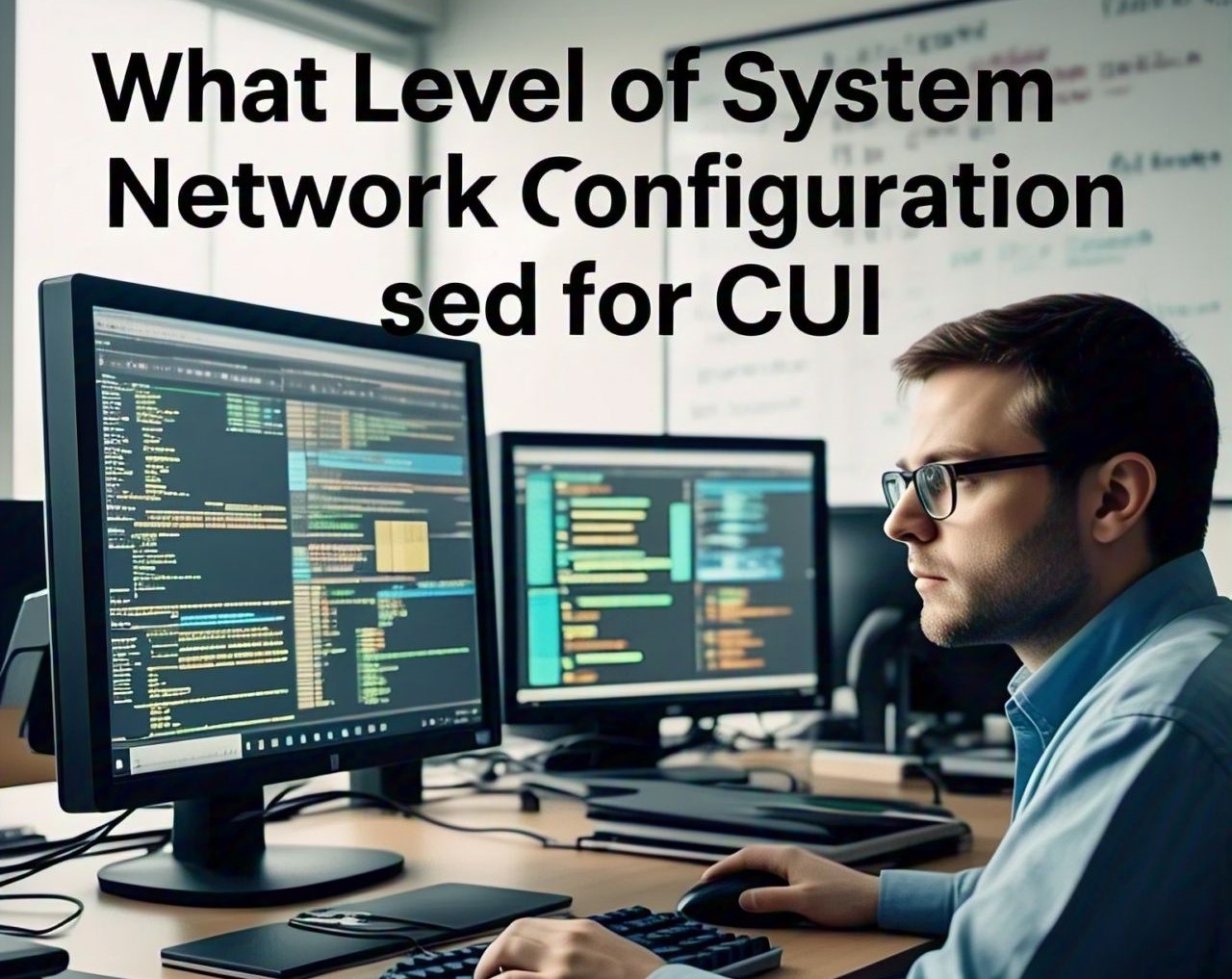What Level of System and Network Configuration is Required for CUI: When it comes to protecting Controlled Unclassified Information (CUI), one of the first questions that comes up is, What System and Network Configuration Levels Are Necessary for CUI? This is a critical question for organizations that need to ensure the safety of sensitive data while maintaining compliance with government regulations. The security of CUI requires a careful balance of both technical protections and administrative procedures. Understanding the level of system and network configuration needed is essential to prevent data breaches and unauthorized access.
The answer to what level of system and network configuration is required for CUI depends on several factors, including the nature of the information, the environment in which it is stored, and the level of security needed. CUI is not classified like top-secret information, but it still demands a high level of protection due to its sensitive nature. In this blog post, we will break down the various levels of protection and what systems and network configurations are required to meet the security standards for CUI.
What Level of System and Network Configuration is Required for CUI
When we talk about Controlled Unclassified Information (CUI), we are referring to data that isn’t classified as top-secret but still needs protection. But the question many people ask is, what level of system and network configuration is required for CUI to keep it safe? This is an important question for organizations that need to protect sensitive information but aren’t sure what measures they need to take to ensure it’s secure.
The security of CUI is taken very seriously, and there are specific requirements to make sure that the information is protected from unauthorized access, data breaches, and other security risks. These requirements often involve a mix of technology and best practices. The configuration of systems and networks is key to making sure that CUI stays safe.
In this blog post, we will explore the different levels of system and network configurations that are needed to secure CUI. Understanding these requirements is the first step toward protecting sensitive data from threats.
Why Understanding the Right Network Configuration is Vital for CUI Security

Having the right network configuration is crucial when it comes to protecting CUI. But why is it so important? Well, when the network is not properly configured, there can be vulnerabilities that allow hackers or other unauthorized users to gain access to sensitive information. This can lead to data leaks, system compromises, or worse.
To prevent these types of security issues, the network configuration must include various protections, such as firewalls, encryption, and access control mechanisms. By doing this, organizations can make sure that CUI stays protected even when it’s being transferred across networks. With the right configuration, the chances of a data breach are significantly reduced.
It’s also essential to ensure that all systems and devices connected to the network follow the same security standards. Any weak link in the system could be a potential target for attackers. Therefore, understanding the importance of network configuration is a vital part of securing CUI.
How the Right System Configuration Keeps CUI Safe
Now that we know network configuration is important, we also need to consider system configuration. When we talk about system configuration, we refer to how the computers, servers, and devices are set up to handle and store CUI. Proper system configuration ensures that only authorized users can access the information, and that the data is kept safe at all times.
For example, all devices that store or process CUI must have strong security software installed. This could include antivirus programs, anti-malware software, and encryption tools. The operating systems on these devices must also be configured to prevent unauthorized access, and regular software updates should be scheduled to fix any security flaws.
It’s not just about the devices themselves; the system configuration also includes things like backup procedures and secure storage solutions. These systems need to be well-organized and protected so that if anything goes wrong, the CUI is still safe and recoverable.
Breaking Down the Levels of Protection for CUI: What’s Required?
There are different levels of protection for CUI, depending on the sensitivity of the information. However, what degree of network and system setup is necessary for CUI? To make it clear, we can divide CUI into various categories, and each category has its own level of protection based on how sensitive the data is.
Basic Protection Requirements
Firewalls to block unauthorized access
To defend against malevolent threats, use antivirus and anti-malware software.
Encryption of data in transit and at rest
Access controls to limit who can view or modify the CUI
Enhanced Protection Requirements
Two-factor authentication for accessing sensitive CUI
Network monitoring tools to detect unusual activity
Secure backup systems for disaster recovery
Regular audits of system and network configurations
Advanced Protection Requirements
Real-time threat detection systems
Comprehensive training for users and administrators on CUI security
Advanced encryption methods for high-sensitivity CUI
Multi-layered security approaches with both physical and network protections
These levels are designed to meet the varying needs of organizations and ensure that they can protect CUI according to its level of sensitivity.
What Factors Influence the System and Network Configuration for CUI

The system and network configuration needed for CUI can be influenced by several factors. It’s not just about choosing the right tools; you must also consider the environment in which the data is being stored and how it will be accessed.
Factors to Consider:
Size of the Organization: Larger organizations may require more robust security configurations than smaller ones.
Type of CUI: Some types of CUI may need more protection than others, depending on their sensitivity.
Regulatory Compliance: Organizations that deal with government contracts may need to follow specific regulations, such as the NIST SP 800-171 guidelines.
Technology Infrastructure: The existing technology and resources available will influence the type of system and network configurations that can be used.
Understanding these factors can help you choose the right level of security for your organization’s needs.
Conclusion
In conclusion, securing Controlled Unclassified Information (CUI) is not a one-size-fits-all process. The level of system and network configuration needed depends on a variety of factors, such as the sensitivity of the data, the size of the organization, and the regulatory requirements that need to be met. By following the proper steps and using the right technologies, organizations can effectively safeguard CUI from potential threats.
It’s important to remember that CUI is still sensitive information, and it must be treated with care. Even though it’s not classified as top-secret, the right system and network configurations are necessary to ensure that the data remains protected at all times. By understanding the requirements and implementing strong security measures, organizations can achieve peace of mind knowing that their CUI is secure.
FAQs
Q: What is CUI
A: Controlled Unclassified Information (CUI) is sensitive data that is not classified but still requires protection due to its importance.
Q: Why is network configuration important for CUI
A: Proper network configuration helps prevent unauthorized access and protects sensitive information from cyber threats.
Q: What are some examples of system configurations for CUI security
A: Antivirus software, encryption, access control mechanisms, and regular software updates are common system configurations to secure CUI.
Q: How do I know what level of security my CUI needs
A: The level of security depends on factors like the sensitivity of the information, industry standards, and compliance regulations.
Q: Can small businesses protect CUI without advanced technology
A: Yes, even small businesses can protect CUI with basic security measures such as firewalls, encryption, and access controls.




